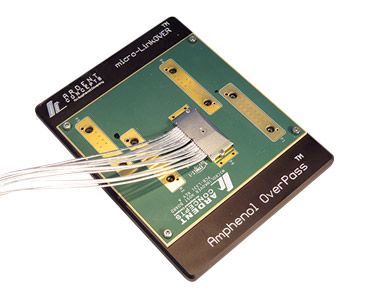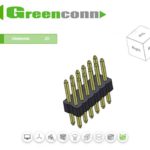High-Speed Connectors Usher in New Era of Communications Technologies
Inventive humans have always sought better, faster methods of communications. Today’s high-speed communications are enabled by high-speed cabling and connectors that are rapidly evolving to give us connectivity on a level we couldn’t imagine only a few years ago — and that will inevitably be left in the dust by future iterations.
For centuries, innovators have sought new communications technologies. There has always been a limit to how quickly information could be shared, and for much of history that limit has been imposed by the method of transmission. The practical speed limits imposed on the sharing of information have shaped history. In the time before steam or the telegraph, a message might take weeks or even months to receive a reply. Regional governors would be entrusted with huge power, simply because they could not wait for guidance from the central government.

Before the age of steam, information could only travel as fast as a person could run, a horse could be ridden, or a ship could sail. The race that we know today as the marathon commemorates the ancient legend of an Athenian messenger who ran from Marathon to Athens to announce the news of his army’s victory over the Persians. Given the rugged coastline and mountainous terrain of ancient Greece, a runner was simply the quickest method for sending this data.
Many solutions have been developed to improve the speed of communication. Ancient people in cultures around the world used a musical instrument called a bullroarer to transmit sound over distances of miles. Indigenous people also used smoke to create visual signals that could be seen across wide expanses, More recently, the invention of the telegraph changed the transmission of data forever.
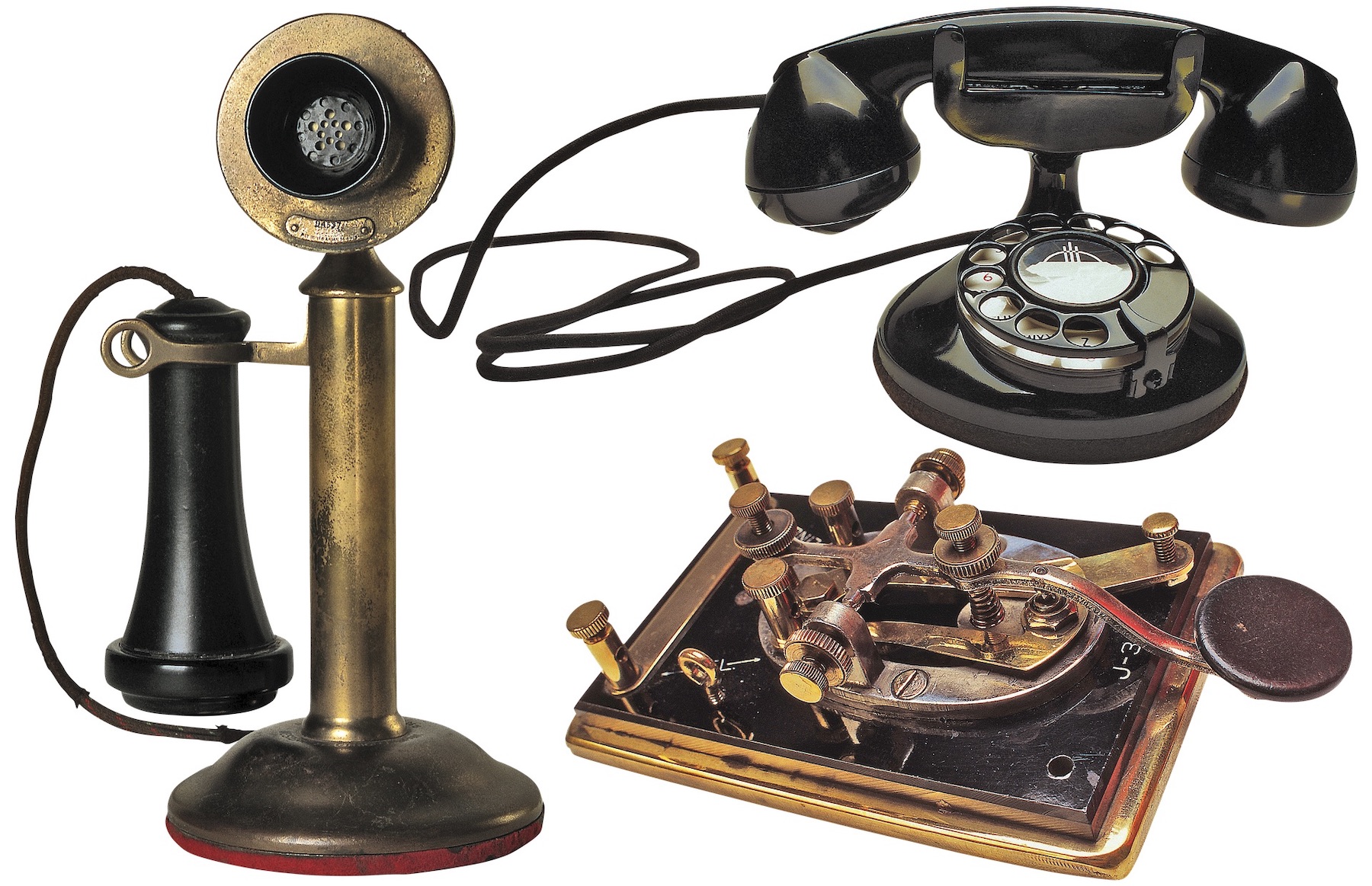
This technology allowed signals to be sent almost instantaneously over wires between two far-flung locations. Suddenly, the speed of communication was no longer limited by the means of transmission. Instead, the limit was imposed by how the data was processed. How quickly the information could travel depended upon the skill of the operators who manned the sending and receiving stations. Once sent, the infrastructure needed to carry the message to its intended recipient was still often horse- or leg-powered. Even so, the effect it had on society was huge, changing everything from news reporting to the conduct of international relations.
Measuring the data rate in bits per second, the telegraph represents a terribly slow technique by modern standards. Even once more direct methods became available in the shape of the wireless telegraph and the telephone, data could still only be sent at the speed that it could be processed at each end. The actual speed of communications did not improve for nearly a century.
A Giant Leap Forward
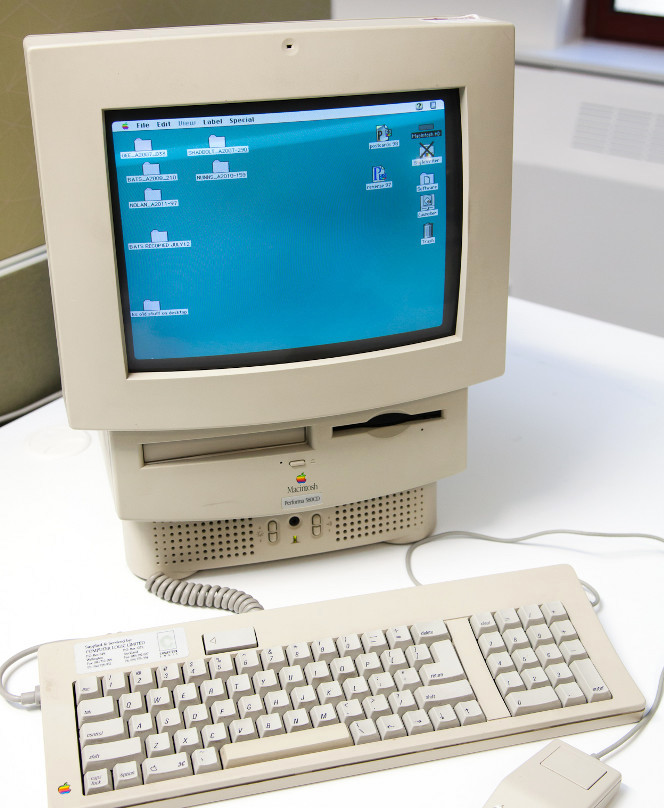
An early Apple computer. (Photo by the National Library of New Zealand, republished per CC BY 3.0 NZ, via Wikimedia Commons.)
The birth of the computer age marked a turning point for communications. Computers could process data much more quickly than any method employed before, but there were still limits. Those of us who remember accessing the internet over a telephone line will remember the clicks and buzzes, and the boredom of waiting for a connection to be made. Even so, the speed of communications took a giant leap forward.
As semiconductors grew in power and capability, the speed of information transfer became limited once more by the medium over which the data was sent, a network of cables joined by connectors. Back in the mid-1990s, I attended a lecture on structured wiring. At the time, 100 megabits per second was the state-of-the-art. I listened as an industry veteran confidently told us that copper-based electrical cable, even with the latest innovations in screened twisted pair (STP) construction, was nearing the limits of its capability.
Three decades later, we are entering yet another phase of development. Copper is still in widespread use, but the latest innovations from hardware manufacturers mean the network of cables and connectors is no longer the limiting factor when it comes to data speed. Using advanced techniques, including differential pairs and PAM4 transmission, connectors are now capable of delivering data faster than most semiconductors can generate it.
The timing of these developments is critical. The rapid growth in the fields of supercomputing, machine learning, and artificial intelligence (AI) means that semiconductor companies are working on chipsets that are capable of incredible speeds. It is vital that the infrastructure around them is ready for these advances.
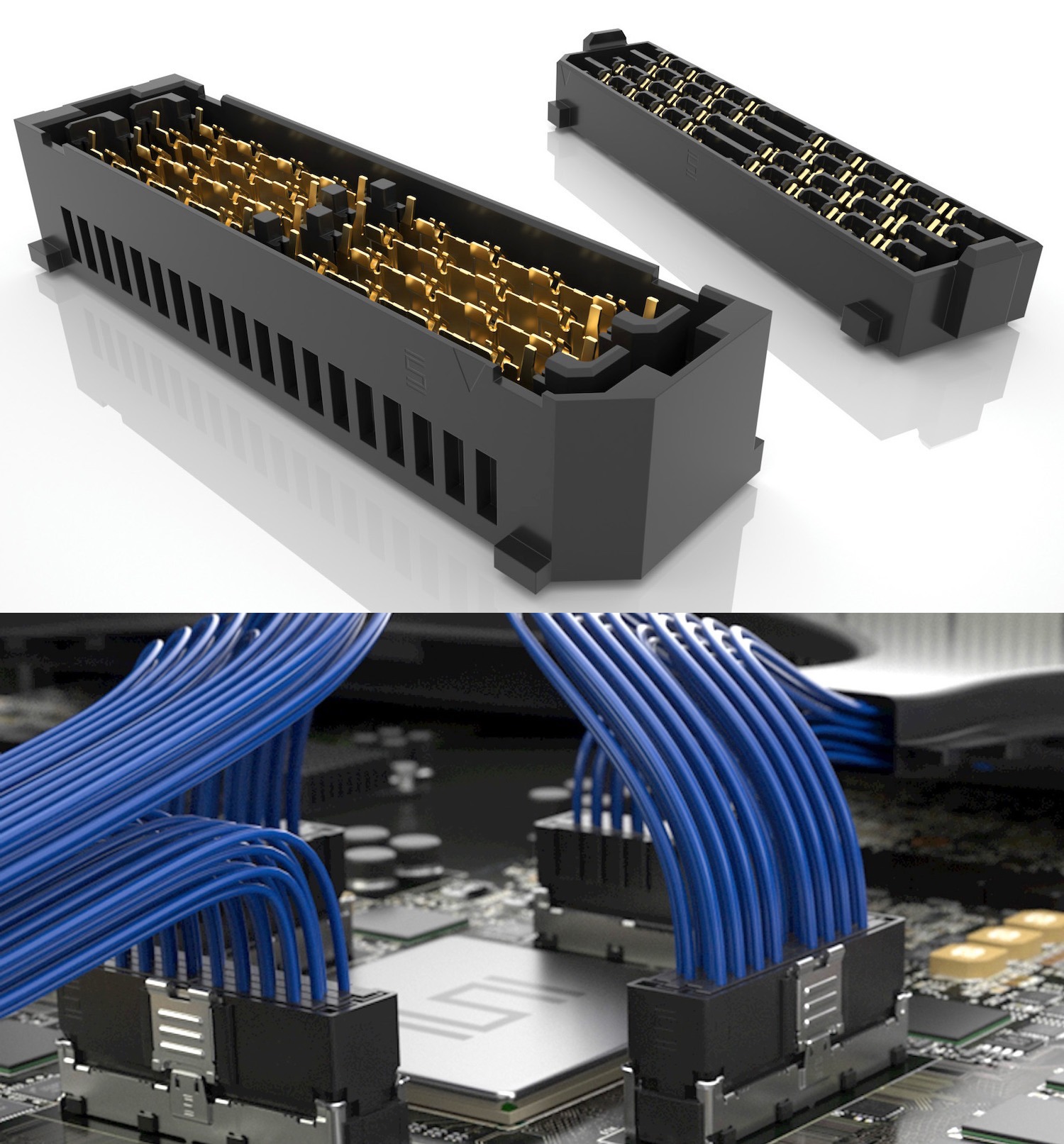
Samtec’s NovaRay connectors (top) and cable assemblies (bottom) combine extreme density and performance in a fully shielded differential pair design with up to 112 differential pairs per inch and two reliable points of contact to deliver 112Gb/s PAM4 per channel and an industry-leading 4.0Tb/s aggregate data rate in 40% less space than traditional arrays.
Connector manufacturers are at the forefront of this revolution. Samtec’s high-speed products achieve 112Gb/s PAM4 performance for the latest chipsets. The company’s The company’s NovaRay® connectors (above) deliver 112Gb/s PAM4 per channel, using a fully shielded differential pair design to achieve an industry-leading 4.0Tb/s aggregate data rate. These connectors are also extremely compact, coming in at 40% smaller than traditional cable connectors. This enables designers to create more streamlined, lightweight, and economical architectures. The next generation of Samtec connectors, the Si-Fly™ family (below), is charting the course towards 224Gb/s PAM4. This ultra-high-density solution connects directly to IC package, and the company anticipates that these connectors will enable an aggregate 51.2Tb/s aggregate data rate in 2021.
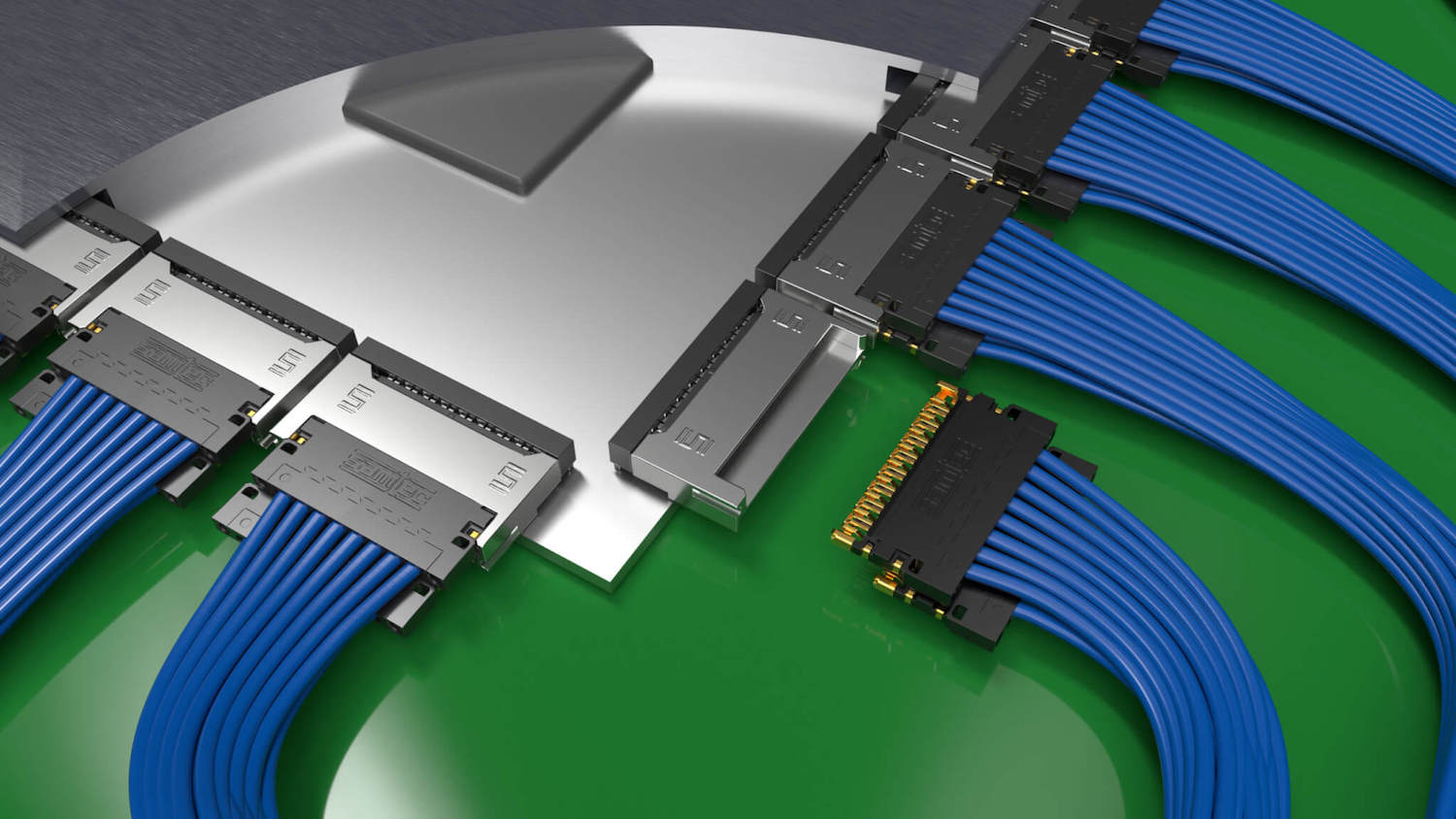
Samtec’s Si-Fly™ is a low-profile, high-density cable system that uses Direct Connect™ technology to elude the BGA and route signals directly from the silicon package through a long-reach twinax cable. This long-reach cable system enables speeds of 25.6TB/s aggregate (56Gb/s per PAM4 channel), with a path to 51.2TB/s (112Gb/s per PAM4 channel), and provides five times the reach of traditional PCB topologies.
Amphenol ICC is another company innovating towards ever increasing speeds. The company recently released its new micro-LinkOVER, a new OverPass PCB twinaxial connector system (pictured left) that provides a cost-effective route to manage the technical challenges of PAM4 56G and 112G systems and beyond. This passive copper connector system utilizes compression-mount contacts and drainless, parallel-pair twinax to achieve a compact package design that can reach speeds of 100G baud per lane.
Molex is another company that has prioritized future-oriented high-speed interconnects. Its QSFP-DD Interconnect System’s eight-lane electrical interface transmits up to 28Gb/s NRZ or 56Gb/s PAM4 for up to 200 or 400Gb/s aggregate. Aimed at telecommunication and data center applications, this system enables designers to update existing architectures to support new higher-speed cabling.
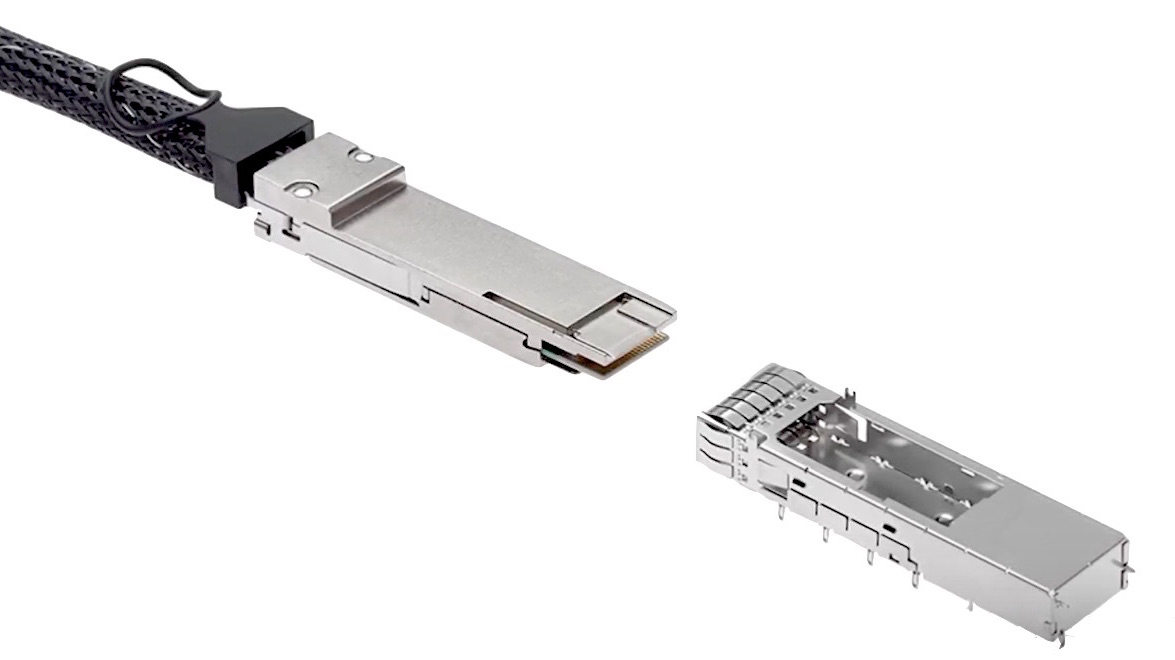
Molex’s QSFP-DD interconnect system delivers double the number of contacts, lanes, and bandwidth in the same space as a 2×1 QSFP form factor while maximizing signal integrity and thermal management, exhibiting extremely low insertion loss, and supporting backwards compatibility.
Fast, Connected Cars
The latest developments are not limited to data centers and supercomputing. In the automotive market, the incorporation of smart technology into cars is leading the development of high-speed connectors. The automotive environment exposes equipment to shock and vibration that proves challenging for high-speed signaling. Under these conditions, a disruption in signal of as little as one microsecond can lead to the loss of crucial information. As we anticipate continued growth in autonomous and connected vehicle technologies, it’s critical that communications be fast and reliable.
Connector companies including TE Connectivity and Amphenol ICC have identified that the current SAE/USCAR-2 specification for continuity testing does not provide the level of assurance that future data connectivity systems will need in this new high-speed, high vibration environment. In response, they are actively developing new high-speed connectivity solutions for vehicles. TE Connectivity’s High-Speed Data (HSD) portfolio features fully shielded, sealed or unsealed housings to protect connections from debris and disruption and supports high-speed data transmission up to 3Gb/s in automotive applications including in-vehicle entertainment systems, cameras, consumer ports, and display units. Amphenol ICC’s HSD Connector System is also a compact, fully shielded interconnect system designed for use with shielded and twisted quad cables in space-constrained automotive applications. It is quality tested according to USCAR-2 and offers features including a high-performance digital system for low-voltage differential signals to prevent interference from crosstalk and external sources, as well as a patented scoop-proof and color-coded design that’s easy to assemble and install and includes both primary and secondary locking mechanisms to ensure high cable retention force and self-aligning properties for contact protection. High-speed connectors like these will not only get faster; they will evolve to serve the specific needs of unique industries.
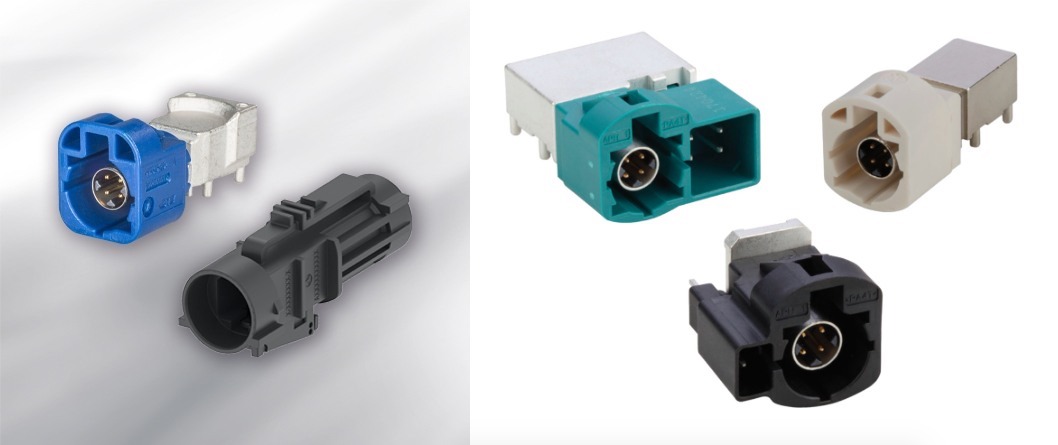
TE Connectivity’s HSD and HSL connectors (left) and Amphenol ICC’s HSD Connector System (right).
For the first time, the method of transmission is no longer the limiting factor in the race for higher data speeds. By removing the restrictions placed on how quickly data can be delivered, connector manufacturers are enabling the next developments in communications, including emerging technologies enabled by supercomputing and AI. Humans and machines are now able to communicate with each other using tools that are faster than ever imagined, and speeds are only going up.
Like this article? Check out our other High-Speed, I/O Connector, and Connector Basics articles, our Datacom/Telecom and Wire/Cable Assemblies Market Pages, and our 2021 and 2020 Article Archives.
- Connectors For Electronics - June 29, 2021
- Modular Connector Solutions Enable Designers to Create Affordable Custom Connectors - April 27, 2021
- Sealed Connectors Protect Against the Hazards of the Transportation Industry - March 2, 2021
